Florence
Florence was a centre of medieval European trade and finance and one of the wealthiest cities of that era. The city is noted for its culture, Renaissance art and architecture and monuments.
Due to Florence's artistic and architectural heritage, it has been ranked by Forbes as one of the most beautiful cities in the world.
Florence is known as the "cradle of the Renaissance" (la culla del Rinascimento) for its monuments, churches, and buildings. The best-known site of Florence is the domed cathedral of the city, Santa Maria del Fiore, known as The Duomo, whose dome was built by Filippo Brunelleschi. The nearby Campanile (partly designed by Giotto) and the Baptistery buildings are also highlights. The dome, 600 years after its completion, is still the largest dome built in brick and mortar in the world. The centre of the city is contained in medieval walls that were built in the 14th century to defend the city. At the heart of the city, in Piazza della Signoria, is Bartolomeo Ammannati's Fountain of Neptune (1563–1565), which is a masterpiece of marble sculpture at the terminus of a still functioning Roman aqueduct.
The River Arno, which cuts through the old part of the city, is as much a character in Florentine history as many of the people who lived there. Historically, the locals have had a love-hate relationship with the Arno – which alternated between nourishing the city with commerce, and destroying it by flood.
One of the bridges in particular stands out — the Ponte Vecchio (Old Bridge), whose most striking feature is the multitude of shops built upon its edges, held up by stilts.
In 1504, Michelangelo's David (now replaced by a replica, since the original was moved in 1873 to the Galleria dell'Accademia) was installed in front of the Palazzo della Signoria (also known as Palazzo Vecchio).
For the most adventurous we now climb up to the Piazzale Michelangelo (Michelangelo’s Square)
On the way home we pop in to Vinci, and visit the great Leonardo Da Vinci birthplace.
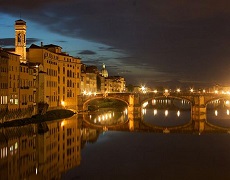
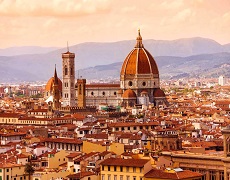
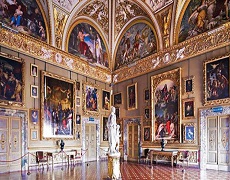
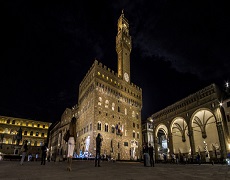
Cinque Terre
The Italian Riviera is not short of rugged coastline or romantic towns and villages, but the five fishing communities of the Cinque Terre are its most iconic highlight. The five villages are no longer the isolated hamlets they once were, but there’s still a feeling of remote authenticity, with few roads, perfectly preserved architecture and a network of stunning coastal and mountain trails.
You can explore these villages by train, on foot or by bus but I would truly recommend the rigid coastal path that connects them.
To start our journey we will take a bus to La Spezia then we will sail over to Portovenere by ferry.
After we finished admiring this nearly 2000 years old village we will continue to Riomaggiore which is the easternmost and largest of all five villages and acts as the Cinque Terre’s unofficial capital. Peeling buildings line up down a steep ravine to a tiny harbour. Their pastel glow at sunset, best appreciated from the sea, is one of the Cinque Terre’s most romantic sights. A botanical garden and bird watching centre sits on a rocky promontory up the hill from its pebbly beach.
We then walk on among the grapevines that surround Manarola produce the Cinque Terre wine, Sciacchetrà. The bustling main street and waterfront promenade are still lined with fishing boats and other such reminders of everyday village life. Punta Bonfiglio has fabulous views and a playground with a bar (or a bar with a playground, depending on your priorities).
Our journey continues to Vernazza. Vernazza’s small harbour – the Cinque Terre’s only securing landing place, its sea-facing amphitheatre of pastel houses that brings on the sighs. The village trademark caruggi (narrow lanes) rise almost vertically from here, a maze of stairs and tiny terraces, with big blue sea views popping at every turn.
Monterosso only rates as ‘swoon-worthy’ until you catch sight of the competition around the corner, but it’s the only village that has a proper strip of beach. Known for its lemon trees and plump anchovies served right off the local fishing boats, it’s the furthest west of the villages and the most easily accessible by car.
Corniglia, sitting on the top of a 100m-high rocky promontory surrounded by vineyards. Corniglia is the only village that lacks direct access to the sea, although steep steps wind from a rocky cove and its waterfront train station far below. Its tranquil, tangled streets lead to a broad and breezy sea-facing terrace, the only vantage point from where you can clock (and photograph) all five villages at once.
After any free time to spare which we can spend at the local shops or down at the beach, shortly we make our way back to La Spezia and hop on our bus.
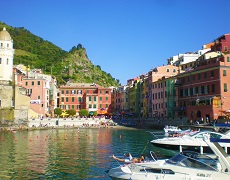

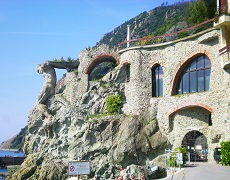
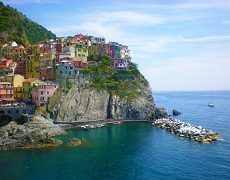
Elba Island
Elba is a Mediterranean island in Tuscany, Italy, 10 kilometres (6.2 mi) from the coastal town of Piombino. Elba is the largest island of the Tuscan Archipelago and the third largest island in Italy, after Sicily and Sardinia. It is located in the Tyrrhenian Sea, about 50 kilometres (30 mi) east of the French island of Corsica.
Napoleon would think twice about fleeing Elba today. Dramatically more congested than when the emperor was exiled here in 1814 (he managed to engineer an escape within a year), the island is an ever-glorious paradise of beach-laced coves, vineyards, azure waters, hairpin-bend motoring, a 1018m mountain (Monte Capanne) and mind-bending views. It's all supplemented by a fine seafaring cuisine, lovely island wines, and land and seascapes just made for hiking, biking and sea kayaking.
After arriving at Portoferraio by ferry, we will go around the island by bus. First let’s visit Napoleons Villa dei Mulini which was his home during his stint in exile on this small isle. With its Empire-style furnishings, splendid library, fig-tree-studded Italianate gardens and unbeatable sea view, the emperor didn't want for creature comforts – contrast this with the simplicity of the camp bed and travelling trunk he used when on campaigns.
To enjoy an invigorating 40-minute hike, head up through Marciana along Via della Madonna to reach this much-altered hilltop chapel with its 13th-century fresco of the Madonna painted on a slab of granite. A remarkable coastal panorama unfolds as you make your way here past scented parasol pines, chestnut trees, wild sage and thyme. Once you reach the chapel (627m), emulate Napoleon and drink from the old stone fountain across from the church – a plaque commemorates his visit in 1814.
The shingle-sand beach at Cavoli, just 6km west of Marina di Campo, is particularly family-friendly, thanks to its beach cafe, sun loungers, pedalos and kids' playground.
Guided tours take visitors from a small site museum in Vallone, 11km south of Capoliveri, to the Genevro mine where magnetite was extracted until the operation closed in 1981. You'll walk through dark underground tunnels to see huge cathedral-like caverns where the metal was extracted.

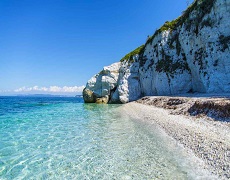
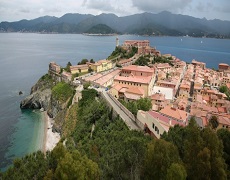
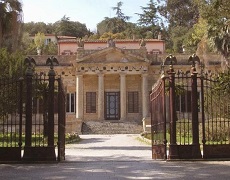




 Italian (IT)
Italian (IT)  English (UK)
English (UK)  Hungarian (Hungary)
Hungarian (Hungary) 









